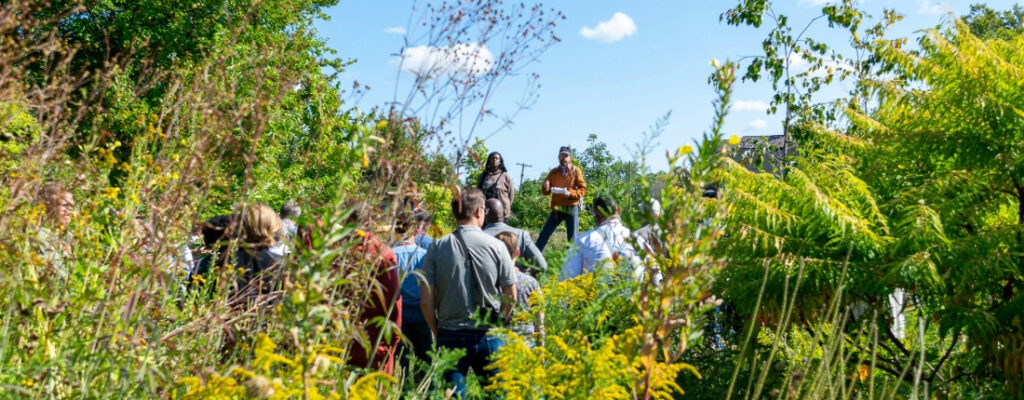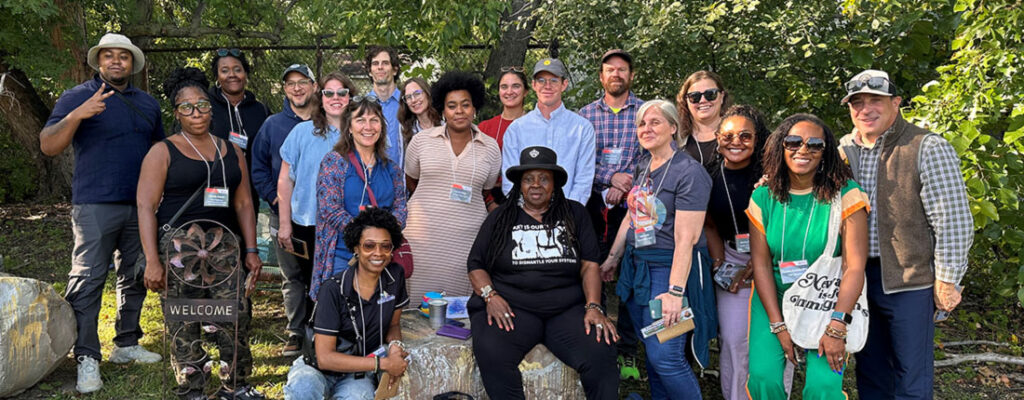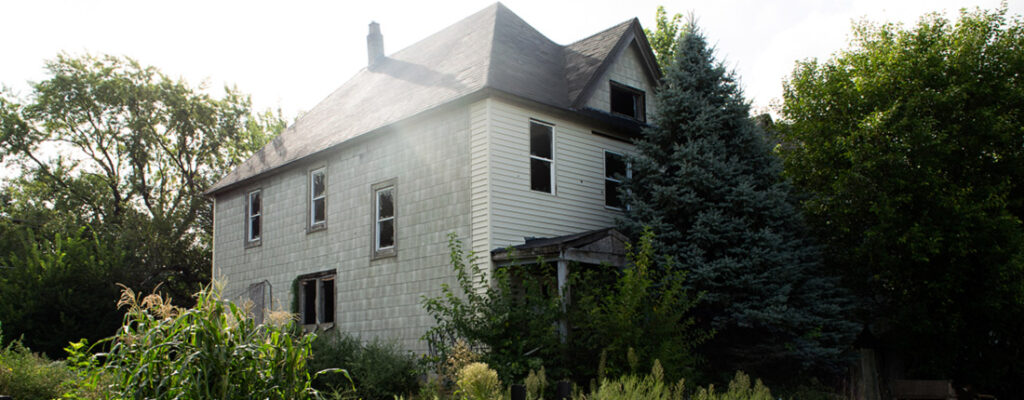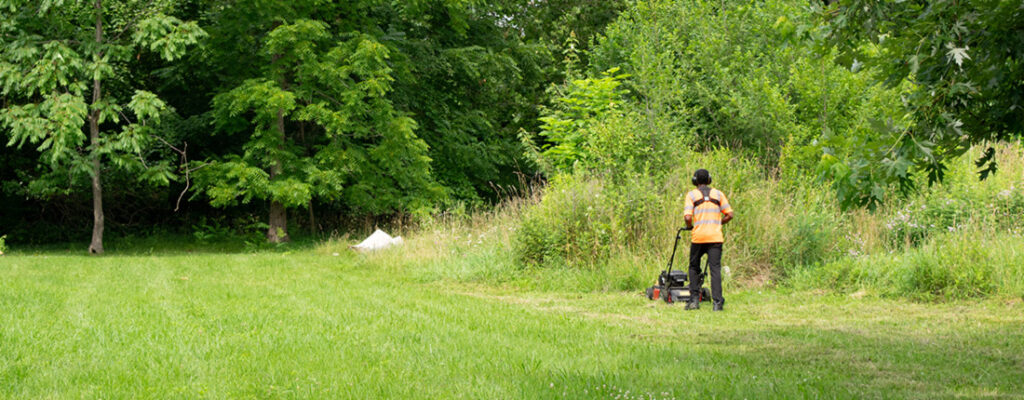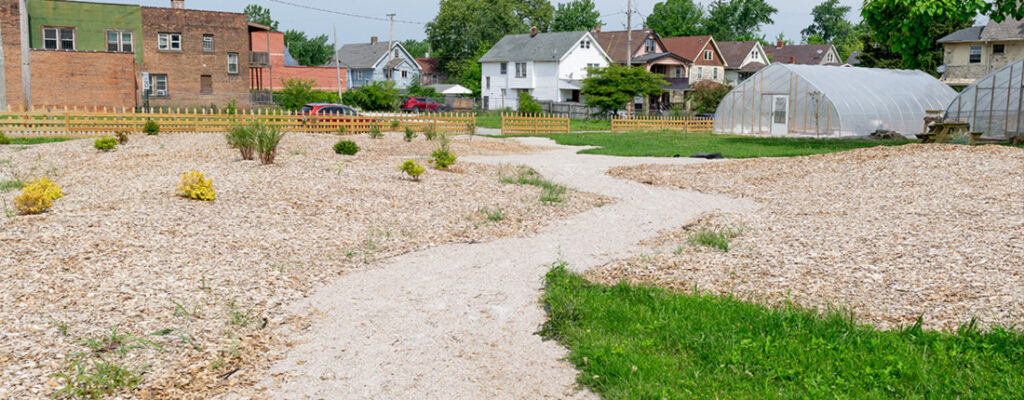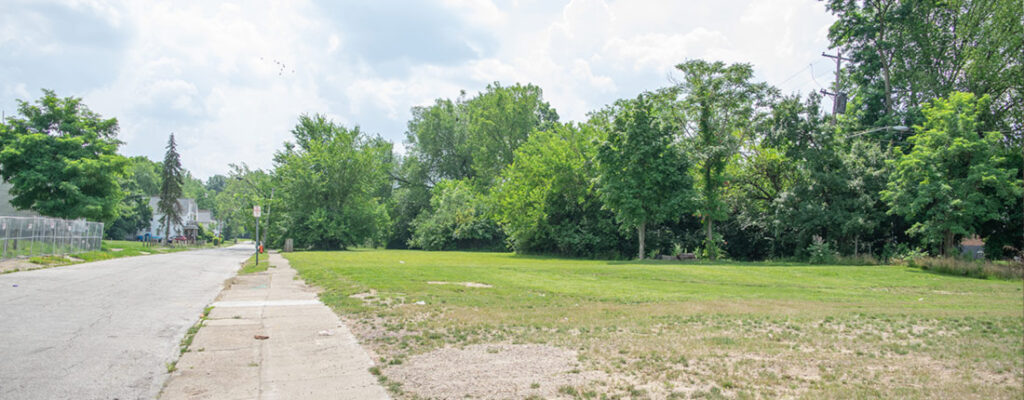Blog
Vacant Land Stewardship
This article is the fifth and final story in a five-story series on resident-led revitalization efforts in Flint, Michigan, developed thanks to the support of the Community Foundation of Greater Flint. Click here to see all stories in the series. Share your reactions on Twitter with #FlintRevitalizing. Lorrie Knighten met Marijoyce Campbell…
Read More »This article is the third in a five-story series on resident-led revitalization efforts in Flint, Michigan, developed thanks to the support of the Community Foundation of Greater Flint. Click here to see all stories in the series. Share your reactions on Twitter with #FlintRevitalizing. “What’s up, Q?” a man says, dribbling a…
Read More »This article is the second in a five-story series on resident-led revitalization efforts in Flint, Michigan, developed thanks to the support of the Community Foundation of Greater Flint. Click here to see all stories in the series. Share your reactions on Twitter with #FlintRevitalizing. When Edna Sabucco was a…
Read More »This article is the first in a five-story series on resident-led revitalization efforts in Flint, Michigan, developed thanks to the support of the Community Foundation of Greater Flint. Click here to see all stories in the series. Share your reactions on Twitter with #FlintRevitalizing. As a pastor, Reginald “Reggie”…
Read More »We’re pleased to share this guest post from Emily Hopkins with the Historic Macon Foundation about their participation in this year’s national #LoveThatLot campaign. A once-vacant lot in the Beall’s Hill neighborhood of Macon, Georgia, experienced a lot of love on Sunday, February 21. Parents and their children, couples with…
Read More »There’s a myth surrounding post-industrial economies, Dan Kinkead, acting executive director of Detroit Future City, shares in conversation about the rebirth of small-scale manufacturing in his hometown of Detroit. “The myth is that we need to build new economies around technology and innovation completely divorced from industry,” said Kinkead. “But…
Read More »When it comes to vacant land reuse, perhaps no other city in the nation faces as great of a challenge and as much of an opportunity as Detroit. Currently, Detroit has an inventory of more than 100,000 vacant parcels without buildings. In terms of land mass, that’s around 20 square…
Read More »Cross-posted from Next City, this article is one of a ten-part series inspired by the 2015 Reclaiming Vacant Properties Conference. The verdure of spring is on full display in Detroit — but so, too, are the challenges of maintaining open land in a fiscally challenged city where over 30 percent…
Read More »On World Food Day, which is themed “Family Farming: Feeding the World, Caring for the Earth” this year, we’re exploring how the reuse of vacant properties can be a critical component of achieving food security and justice. In order to successfully eliminate entrenched, systemic blight communities must support a wide array of…
Read More »This article was originally published in the Summer 2014 issue of Breaking Ground, our quarterly newsletter. To receive Breaking Ground in your inbox, please join our email list. It might go without saying, but the City of Flint in 2014 is very different from the Flint of 1960. Decades of…
Read More »
